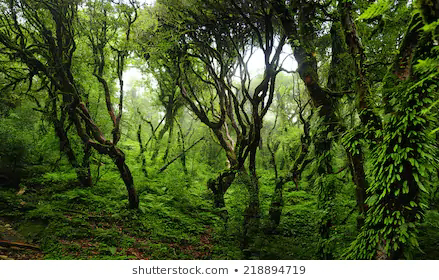DANGEROUS DESTRUCTION OF FORESTS
Part - III
(Continued from yesterday)
Forests in India
Forests have significant role in Indian literature and culture. Yajnavalkya Smriti written before 5th century AD made cutting of trees as punishable offence. Kautalya's Arthshastra written in the Mouryan period suggests the need of forest administration. Forest was seen as an essential part for a successful kingdom. A 2010 study by the Food and Agricultural Organization ranks India among 10 countries with the largest forest area. Some 5,00,000 sq km which is about 17% of India's land area were regarded as forest area in the early 1990s. India's 0.6% average annual rate of deforestation for agricultural and other land uses in the decade beginning 1981 was one of the lowest in the world and on a par with Brazil. Prior to the 1980s, India deployed a bureaucratic method to estimate forest coverage. In the 1980s, space satellites were deployed for remote sensing if real forest cover. Standards were introduced to classify the forests into different categories. According to the 2019 forest survey, the state of MP has the largest cover. Mizoram is the forest rich (85.41%) state in India. The states showed larger increase in forest cover is Karnataka followed by Andhra, Kerala and J&K. The states with largest area of forests are, MP, Arunachal, Chhattisgarh, Maharashtra and Odisha.
In 2002, India set up a National Forest Commission to review and assess policy and law with regard to India's forests. After the survey the commission gave over 300 recommendations for the upkeep and development of forests. India's national forest policy expects to invest US$ 26.7 billion by 2020, to pursue nationwide afforestation coupled with forest conservation, with the goal of increasing India's forest cover from 20% to 33%. Significant forests products of India include paper plywood, sawn wood, timber, poles, pulp and match wood, fuel wood, sal seeds, tendu leaves, gums and resins, came and rattan, bamboo, grass and fodder, drugs, spices and condiments, herbs, cosmetics and tannins.
................. to be continued
(Indebted to Wikipedia for all relevant data)
KV George
kvgeorgein@gmail.com




Comments
Post a Comment